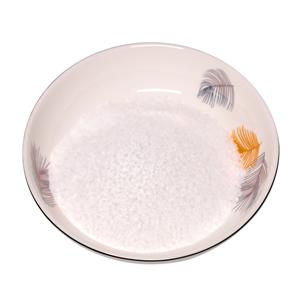Uses: Ethyl paraben, that is, parabens, has strong inhibitory effect on mold and yeast, and poor effect on bacteria, especially on lactic acid bacteria and gram-negative bacilli, but its antibacterial ability is stronger than sorbate and benzoic acid, and the antibacterial effect is not affected by pH value, and the effect is good in the range of pH value 4-8. The longer the p-hydroxybenzoate alkyl group, the stronger the antibacterial effect, butyl ester > propyl ester > ethyl ester. Parabens are one of the preservatives widely used in the world. China's provisions for pastry filling, the maximum usage of 0.5g/kg(to p-hydroxybenzoic acid meter, the same below); In juice (flavor) drinks, jams (excluding cans), soy sauce, sauces, the maximum use of 0.25g/kg; In carbonated beverages, egg yolk filling maximum use 0.2g/kg; The maximum use in vinegar is 0.1g/kg; The maximum use in fruit and vegetable preservation is 0.012g/kg. It can be used as a preservative (food, medicine), antibacterial agent, anti-mold agent, organic analysis to determine carbonyl and halide. The product has a wide range of antibacterial effects on molds, yeasts and bacteria. The effect on molds and yeasts is strong, but the effect on bacteria is poor, especially on Gram-negative bacilli and lactic acid bacteria. It is a highly effective antiseptic and bactericide for food and medicine.
| Melting Point | 114-117 °C |
| Boiling Point | 297-298 °C |
| Density | 1.1708 (rough estimate) |
| Vapor Pressure | 0.00012 hPa (25 °C) |
| Refracitve Index | 1.5286 (estimate) |
| Flashing Point | 297-298°C |
| Storage Condition | 2-8°C |
Solubility
| Very slightly soluble in water, soluble in ethanol (96%) and methanol. |





 China
China


